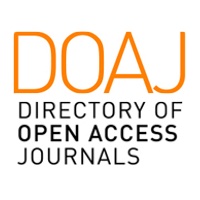USE OF MUSTARD OIL CAKE IN BREAD TECHNOLOGY
DOI:
https://doi.org/10.32782/2310-0478-2024-2-108-113Keywords:
mustard, oil cake, wheat flour, recipe, evaluation of dough, qualityAbstract
Products, developed with guaranteed introduction of a significant amount of nutrients with raw materials: protein, fat, nitrogenfree extractive substances, occupy a special place among food products for special dietary consumption. Mustard from seed processing products have a high nutritional and energy value, which indicates the possibility of their use in the manufacture of food products. The purpose of the research was to determine the properties of mustard seed mea to substantiate the composition of flour raw materials in the recipe of dough wheat products. Different types of flour raw materials from seeds of the oil crop mustard were studied, as well as theoretical and practical aspects for substantiating the technology of wheat products. The mustard oil cake was dried, crushed and added in different ratios (3%, 5%, 10%, 15%) to the recipe of dough made from wheat flour of the highest grade. The addition of mustard oil cake flour affected the dough characteristics by increasing the moisture content and fuzziness, while decreasing the dough forming time. An increase in the proportion of mustard flour by more than 15% of the total volume of the flour mixture will lead to an undesirable slowing down of fermentation processes. The introduction of mustard flour in the amount of 10% to the recipe composition of ordinary wheat dough products is optimal, as it increases their biological value by enriching with nutrients, while not significantly disturbing the rheological technological characteristics and acidity. It is worth noting that the rheological parameters of the experimental samples with the addition of white mustard flour (Sinapis alba L.) have fewer deviations from the control variant than in the samples made of Sarepta mustard flour (Brassica juncea (L.) Czern.). Therefore, the study of the properties of mustard oil cake by adding it in the form of flour to the recipe of wheat dough products is promising and needs further study through evaluation of finished products.
References
Dey D., Richter J.K., Ek P., Gu B.J., Ganjyal G.M. Utilization of Food Processing By-products in Extrusion Processing: A Review. Front Sustain Food Syst. 2021. Jan 26; 4.
Zarzycki P., Wirkijowska A., Nawrocka A., Kozłowicz K., Krajewska M., Kłosok K., Krawęcka A. Effect of Moldavian dragonhead seed residue on the baking properties of wheat flour and bread quality. LWT. 2022. Feb 1;155:112967.
Tiwari A., Khawas R. Food Waste and Agro By-Products: A Step towards Food Sustainability. In: Innovation in the Food Sector Through the Valorization of Food and Agro-Food By-Products. IntechOpen; 2021. 4. FAOSTAT (Food and Agriculture Organization of the United Nations). 2021. URL: http://www.fao.org/faostat/en/#search/mustard%20seed
Siavash B., Karaptianand J., Zare S. Studying on lipid content and fatty acids in some varieties of colza (Brassica napus). J. Pajuhesh & Sazandegi, 2005. No. 67. Р. 95–101.
Литвин С. Г. Олійні культури на Україні. Київ: Наукова думка, 1961. 50 с.
Рожкован В., Чехов С., Буділка Г. Сарептська озима гірчиця – нова перспективна культура. Пропозиція. 2006. № 7. С. 58–60.
Рахметов Д.Б., Костецька К. В., КовтунВодяницька С. М., Рахметова С.О. Використання борошна та олії рижію посівного для збагачення хліба пшеничного: матеріали XII міжнародної науково-технічної конференції «Наукові проблеми харчових технологій та промислової біотехнології в контексті Євроінтеграції»; 7 листопада 2023 р., м. Київ, 2023. С. 91–93.
Байдала В. В., Мірзоєва Т. В., Мірзоєв Т. Д. Господарська цінність технічних нішевих культур і перспективи розвитку їхнього виробництва. Економіка і управління бізнесом, 14(1). 2023 5. С. 23.
Архипенко Ф. М., Слюсар С. М., Оксимець О. Л. Гірчиця біла – культура широкого діапазону використання. Агроном, 2006. № 3. С. 26–28.
Жуйков О. Г. Ринок гірчиці в Україні: стан, проблеми, перспективи. Таврійський науковий вісник: зб. наук. пр., 2014. Вип. 87. С. 39‒47.
Кирилюк В. П., Кричківський В. М., Ковальчук Н. В. Адаптивна система основного обробітку ґрунту під гірчицю білу (Sinapis alba). Зернові культури. Т. 5. № 1. 2021. С. 125–131.
ДСТУ 1052:2005. Гірчиця харчова. Загальні технічні умови. [Чинний від 2006-07-01]. Київ, 2006, 16 с.
Mustard production. Govt targets 17 million tonnes mustard production by 2025-26. 2021. URL: https://www.thehindubusinessline.com/economy/agri-business/govt-targets-17-million-tonnesmustard-production-by-2025-26/article34392637.ece
Mustard Seed Crop Outlook Deteriorates in Top Exporter Canada. 2022. URL: https://grointelligence.com/insights/mustard-seed-crop-outlookdeteriorates-in-top-exporter-canada
Лабораторний практикум з технології хлібопекарського та макаронного виробництва : навч. посіб. [Текст] / [В. І. Дробот, Л. Ю. Арсеньєва, О. А. Білик та ін.]; за ред. В. І. Дробот. Київ: Центр навчальної літератури, 2006. 341 с.








